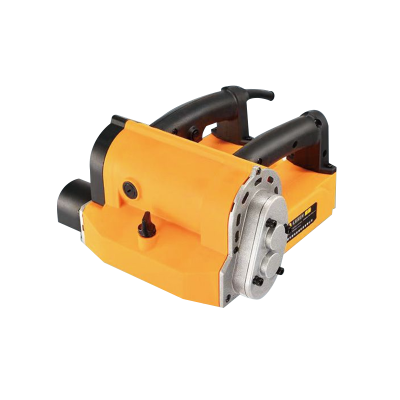A wall planing machine is a specialized construction tool used to create smooth and even surfaces on concrete or plastered walls. Whether in new construction or renovation work, preparing the wall surface properly is essential for applying paint, wallpaper, or other finishes. This is where the wall planing machine proves to be highly useful, offering consistency and efficiency in surface treatment tasks.
The primary function of a wall planing machine is to remove uneven layers, paint residues, minor bumps, or old coatings from walls. By doing so, it helps improve the adhesion of new surface materials. This machine is typically used by professionals in construction, remodeling, or interior finishing who require precise surface preparation without relying solely on manual tools like scrapers or sanding blocks.
There are different types of wall planing machines available on the market. Some are handheld, offering greater flexibility and ease of use in tight spaces, while others are larger, walk-behind models suitable for bigger wall areas. Regardless of the size, most machines come with adjustable depth settings, allowing the user to control how much surface material is removed during operation.
A wall planing machine usually features a rotating drum or disc equipped with sharp blades or cutters. These components shave off thin layers of material as the machine is moved across the wall. Some models also include dust collection systems, which are essential for reducing airborne debris and maintaining a cleaner work environment. Proper dust control is especially important when working indoors or in occupied buildings.
When using a wall planing machine, safety precautions must be followed. Operators should always wear protective gear, including safety goggles, gloves, and hearing protection. It’s also important to inspect the machine before each use, checking for any worn or damaged parts that could affect performance. Secure handling and stable positioning help ensure a smoother and more consistent result.
Another factor to consider is the type of surface being treated. Not all walls are the same. Some may be made of reinforced concrete, while others could be plaster, drywall, or brick. The power and blade type of the wall planing machine should be chosen based on the wall material and the degree of surface correction required. Using the wrong machine or settings can cause damage to the wall or reduce tool effectiveness.
The wall planing machine is frequently used in a variety of applications. In commercial construction, it helps prepare large interior wall areas for finishing. In residential renovation, it can be used to remove old wallpaper glue, textured coatings, or minor wall imperfections. In industrial settings, it may be used to restore damaged or weathered surfaces before applying new protective layers.
Maintenance is another key aspect of keeping a wall planing machine in good working condition. Blades should be cleaned and replaced when necessary to maintain cutting efficiency. The motor and mechanical parts should be lubricated according to the manufacturer’s instructions. Regular inspection and cleaning after use can extend the machine’s lifespan and ensure reliable operation.
The wall planing machine is a practical solution for achieving smooth wall finishes across various construction and renovation tasks. Its ability to speed up surface preparation while offering adjustable precision makes it a useful tool for both professionals and skilled DIY users. With the right settings, care, and technique, this machine can support a wide range of wall treatment needs.
https://www.zjsaimatools.com/product/cutting-machine/wall-planing-machine/
MODEL LS-8305A
RATED POWER 1600W
BLADE SIZE 150mm
NO-LOAD SPEED 1000-4000r/min
VOLTAGE 220V~50/60Hz
DEPTH OF WALL PLANING 1-4mm
BOX SIZE 47.5x39.5x31.5cm
QTY/CTN 3PC
G. W/N.W 20.8/19.5kg
